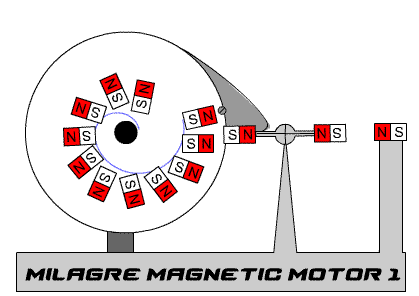
A number of clever appropriate technology solutions presented online are sometimes too good to be true, and most likely fake. It is important to recognize perpetual motion machines as a source of disinformation in solving practical problems.
Definition[edit | edit source]
Perpetual motion is the motion of bodies that continues forever in an unperturbed system. A perpetual motion machine is a hypothetical machine that can do work infinitely without an external energy source. This kind of machine is impossible, since its existence would violate the first and/or second laws of thermodynamics.
These laws of thermodynamics apply regardless of the size of the system. For example, the motions and rotations of celestial bodies such as planets may appear perpetual, but are actually subject to many processes that slowly dissipate their kinetic energy, such as solar wind, interstellar medium resistance, gravitational radiation and thermal radiation, so they will not keep moving forever.
Thus, machines that extract energy from finite sources cannot operate indefinitely because they are driven by the energy stored in the source, which will eventually be exhausted. A common example is devices powered by ocean currents, whose energy is ultimately derived from the Sun, which itself will eventually burn out.
In 2016, new states of matter, time crystals, were discovered in which, on a microscopic scale, the component atoms are in continual repetitive motion, thus satisfying the literal definition of "perpetual motion". However, these do not constitute perpetual motion machines in the traditional sense, or violate thermodynamic laws, because they are in their quantum ground state, so no energy can be extracted from them; they exhibit motion without energy.
Why they don't work[edit | edit source]
Perpetual motion is the motion of bodies that continues forever in an unperturbed system. A perpetual motion machine is a hypothetical machine that can do work infinitely without an external energy source. This kind of machine is impossible, since its existence would violate the first and/or second laws of thermodynamics.
These laws of thermodynamics apply regardless of the size of the system. For example, the motions and rotations of celestial bodies such as planets may appear perpetual, but are actually subject to many processes that slowly dissipate their kinetic energy, such as solar wind, interstellar medium resistance, gravitational radiation and thermal radiation, so they will not keep moving forever.

